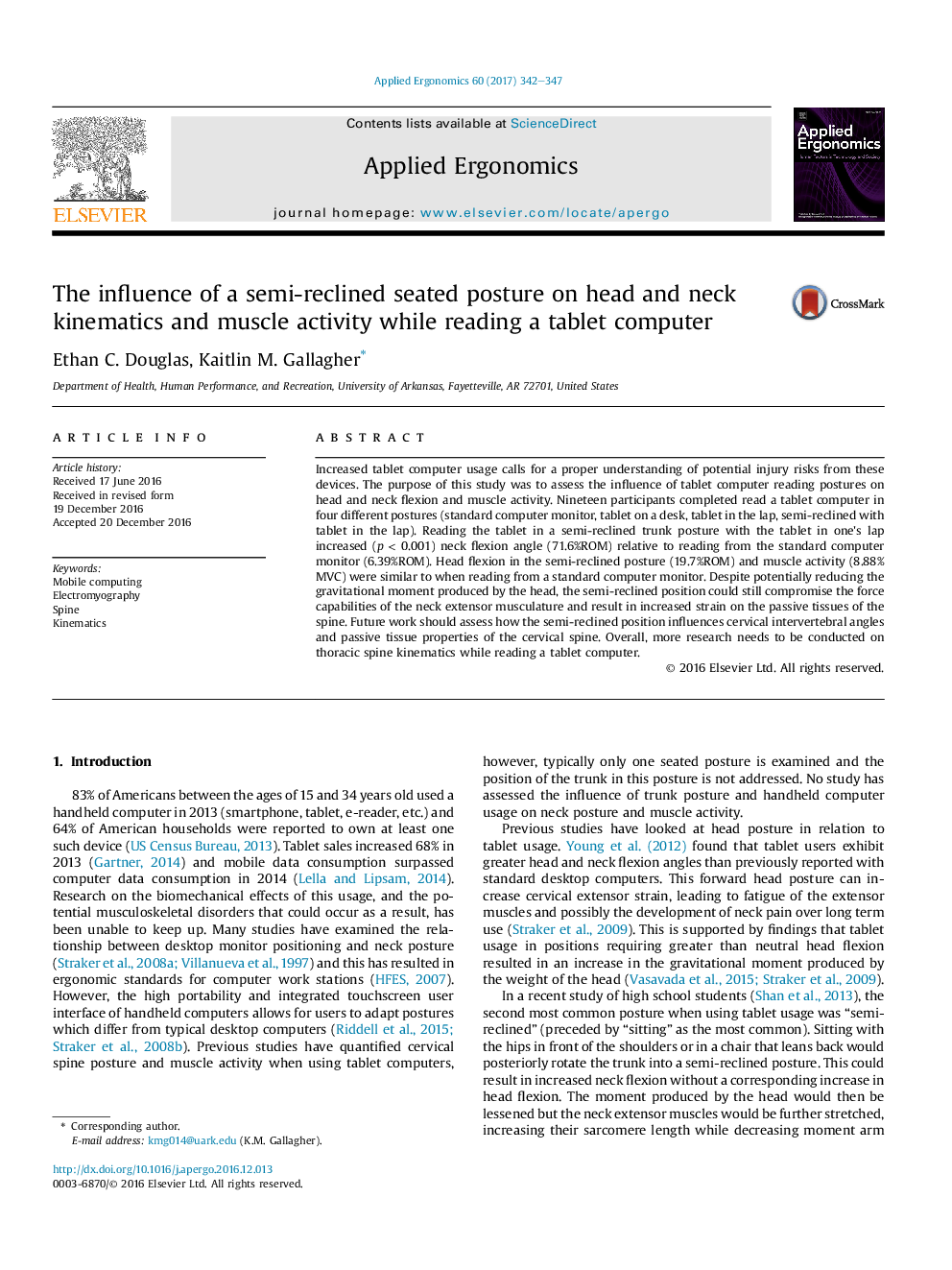| Article ID | Journal | Published Year | Pages | File Type |
|---|---|---|---|---|
| 4972117 | Applied Ergonomics | 2017 | 6 Pages |
Abstract
Increased tablet computer usage calls for a proper understanding of potential injury risks from these devices. The purpose of this study was to assess the influence of tablet computer reading postures on head and neck flexion and muscle activity. Nineteen participants completed read a tablet computer in four different postures (standard computer monitor, tablet on a desk, tablet in the lap, semi-reclined with tablet in the lap). Reading the tablet in a semi-reclined trunk posture with the tablet in one's lap increased (p < 0.001) neck flexion angle (71.6%ROM) relative to reading from the standard computer monitor (6.39%ROM). Head flexion in the semi-reclined posture (19.7%ROM) and muscle activity (8.88%MVC) were similar to when reading from a standard computer monitor. Despite potentially reducing the gravitational moment produced by the head, the semi-reclined position could still compromise the force capabilities of the neck extensor musculature and result in increased strain on the passive tissues of the spine. Future work should assess how the semi-reclined position influences cervical intervertebral angles and passive tissue properties of the cervical spine. Overall, more research needs to be conducted on thoracic spine kinematics while reading a tablet computer.
Related Topics
Physical Sciences and Engineering
Computer Science
Human-Computer Interaction
Authors
Ethan C. Douglas, Kaitlin M. Gallagher,
